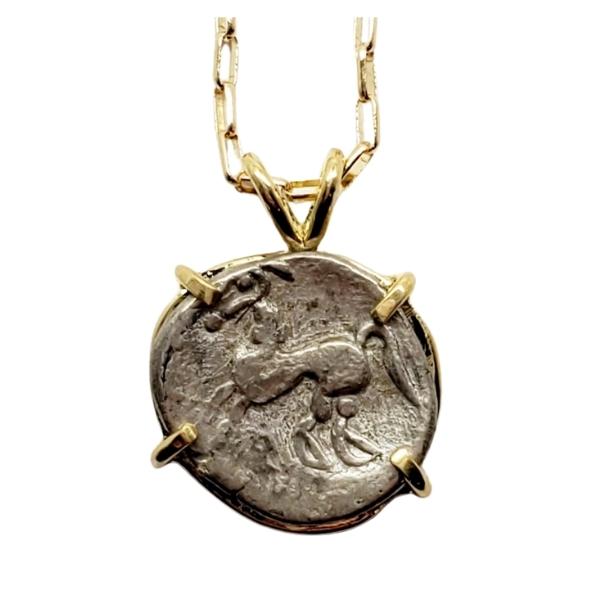
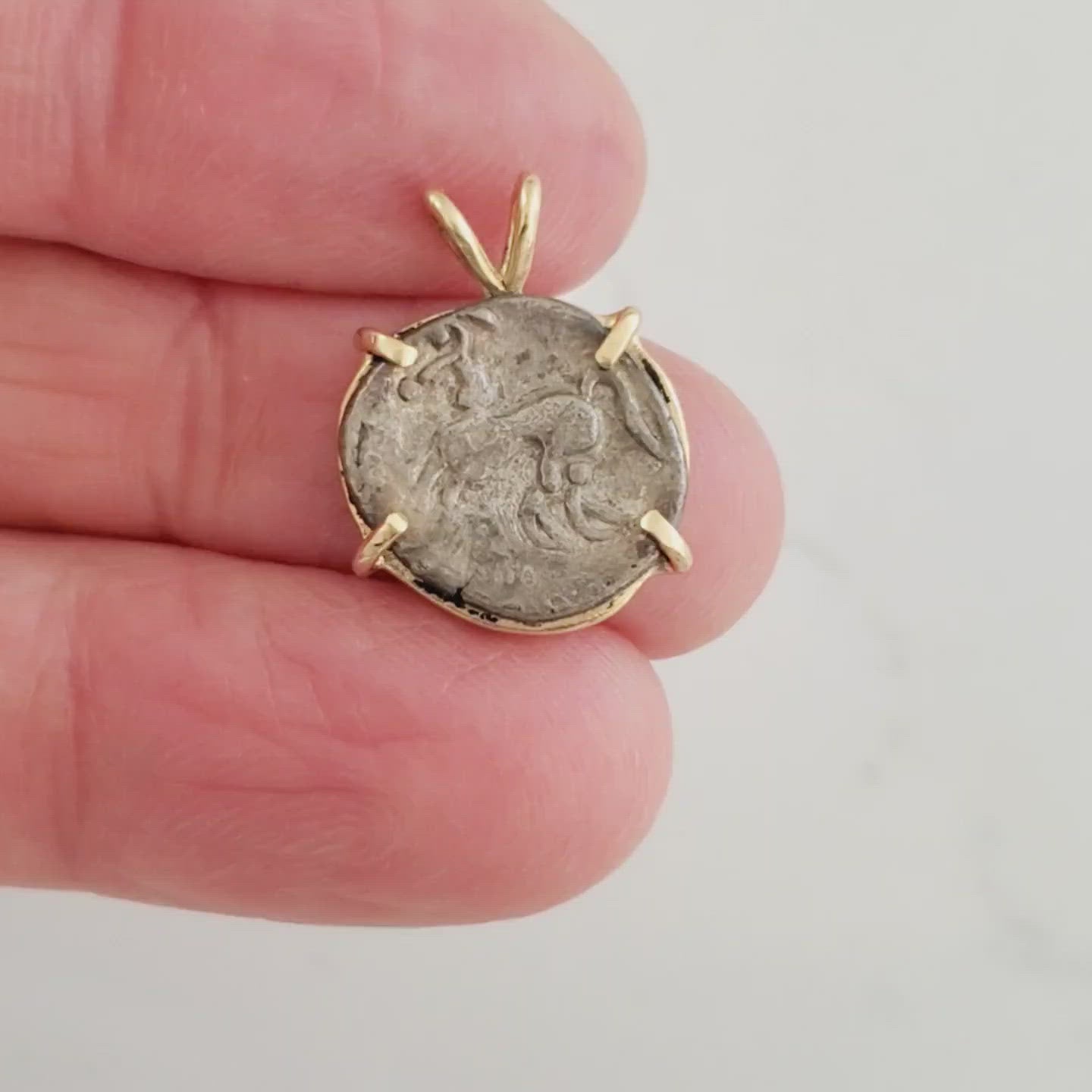
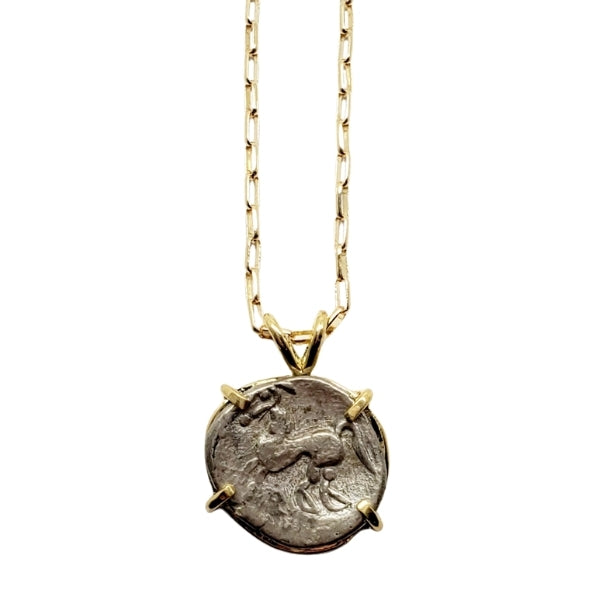
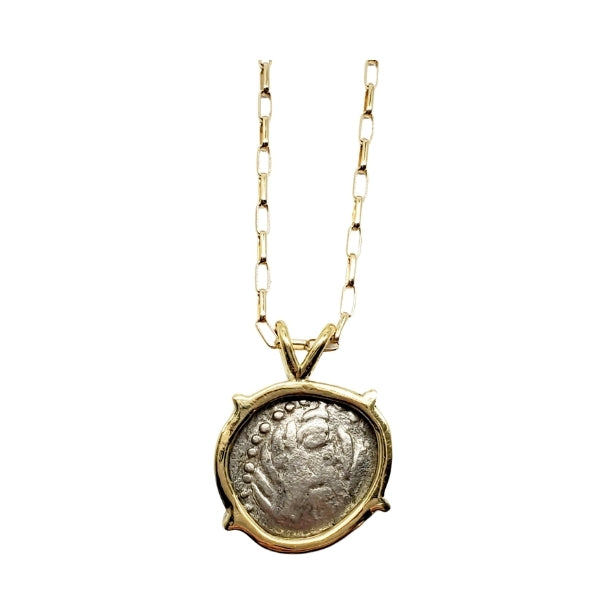
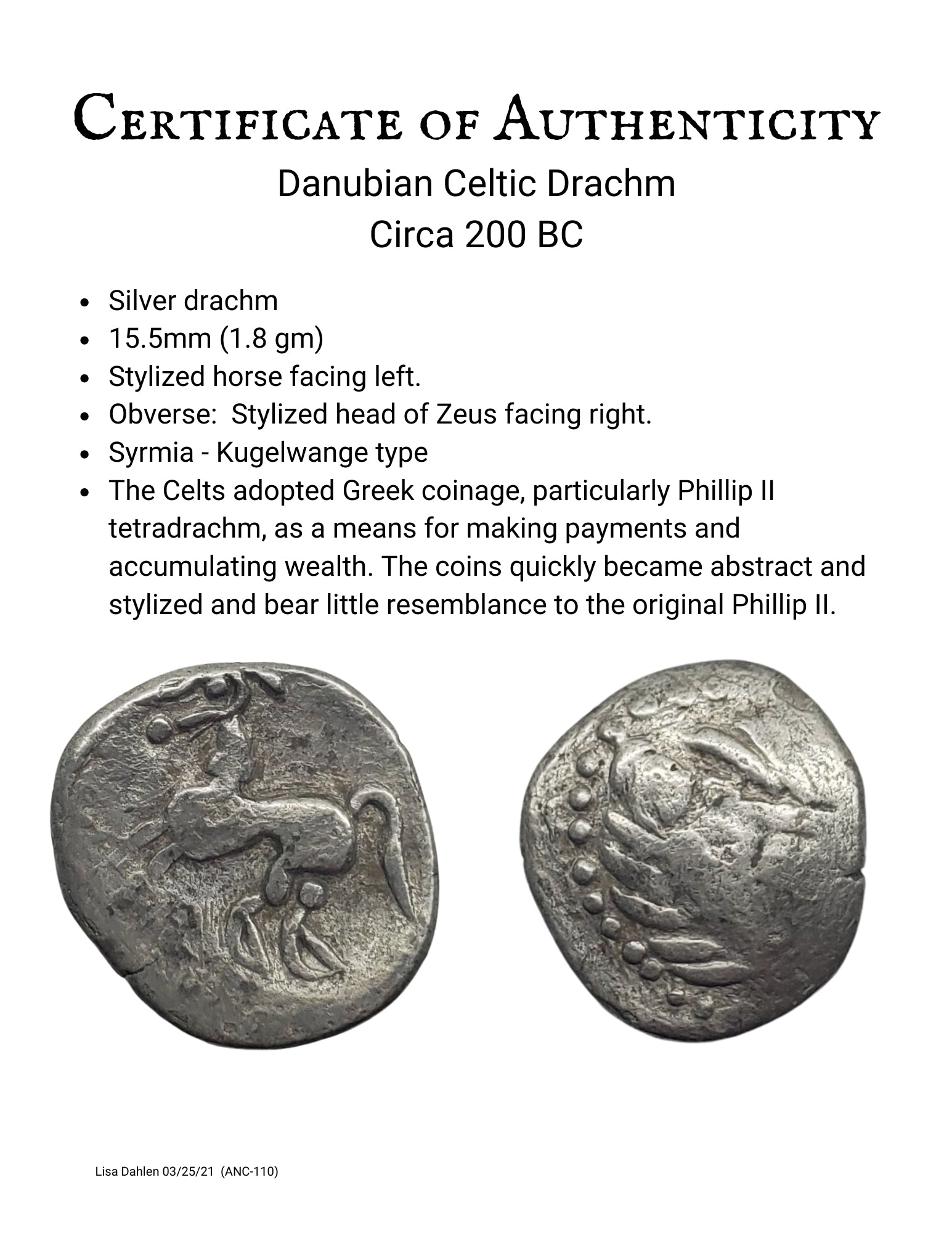
Celtic Silver Coin circa 200 BC (110)
The stylized horse featured on this ancient Celtic silver coin appears to be flying, resembling a Pegasus without wings.
The Celts copied Greek and Roman coin designs to facilitate trade, but the artwork quickly became more abstract, incorporating familiar Celtic symbols.
Coin size approx 15.5mm
Hand-fabricated 18kt gold mount.
One of a kind with a Certificate of Authenticity.
Chain not included; available separately. See Chains
Dated: circa 200 BCE
Choose options





The stylized horse featured on this ancient Celtic silver coin appears to be flying, resembling a Pegasus without wings.
The Celts copied Greek and Roman coin designs to facilitate trade, but the artwork quickly became more abstract, incorporating familiar Celtic symbols.
Coin size approx 15.5mm
Hand-fabricated 18kt gold mount.
One of a kind with a Certificate of Authenticity.
Chain not included; available separately. See Chains
Dated: circa 200 BCE
